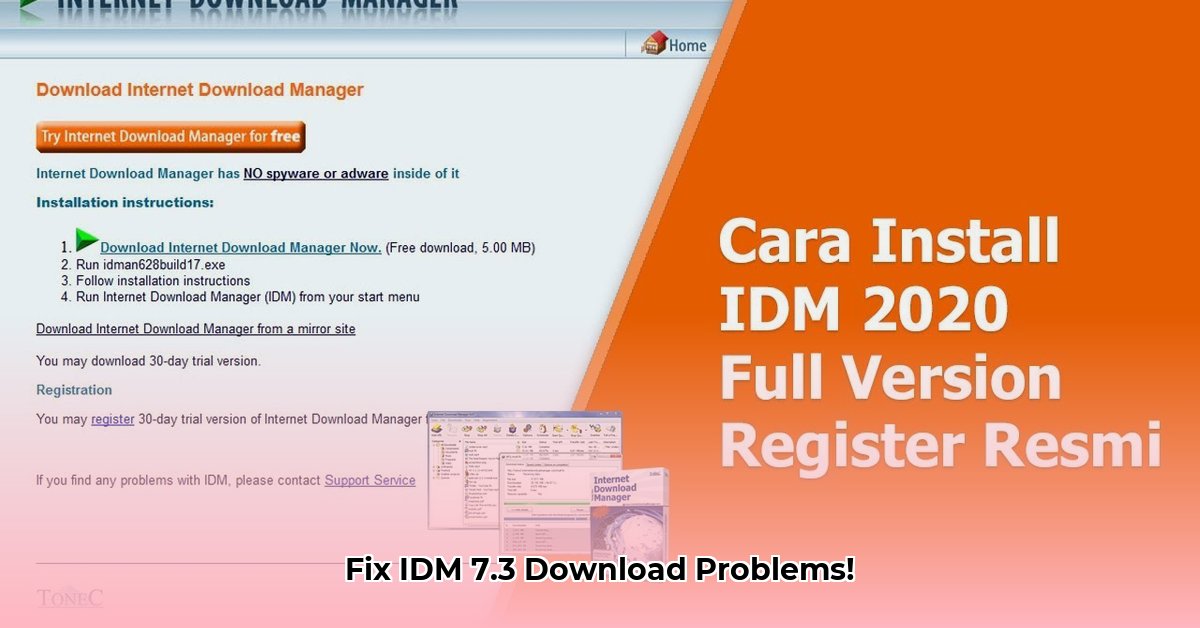
Understanding the 7.3L Power Stroke IDM
The Injector Driver Module (IDM) in your 1999-2003 Ford 7.3L Power Stroke is a crucial component. It acts as an intermediary, receiving signals from the engine control module (ECM) and precisely controlling the firing sequence of your fuel injectors. Think of it as the translator between your truck's brain and its fuel delivery system. Each injector requires a precisely timed electrical pulse; a malfunctioning IDM disrupts this timing, leading to a range of issues from rough idling to complete engine failure.
Diagnosing a Faulty 7.3L Power Stroke IDM
Before replacing your IDM, thorough diagnosis is essential. Jumping to conclusions can waste time and money. Follow these steps:
Visual Inspection: Begin with a visual inspection. Look for signs of damage such as cracks, corrosion, or water intrusion (a frequent culprit). A clearly damaged IDM is a strong indicator of trouble.
OBD-II Scan: Use an OBD-II code reader to retrieve diagnostic trouble codes (DTCs). Certain codes directly point to injector-related problems, suggesting an IDM issue. Note these codes for later reference.
Voltage Check: Low voltage to the IDM can cause erratic behavior. Consult your owner's manual or a reliable online resource for the correct voltage specifications and testing procedures. Incorrect testing can damage your vehicle's electrical system.
Wiring Harness Examination: Carefully inspect the wiring harness connected to the IDM. Look for loose connections, broken wires, or signs of chafing. A damaged wire can interrupt the signal to the injectors. Repair or replace damaged wiring as needed. This is critical for reliable operation.
Injector Testing (If Necessary): If the prior steps don't pinpoint a faulty IDM, individual injector testing may be necessary. This step typically requires specialized tools and knowledge.
Replacing Your 7.3L Power Stroke IDM: A Step-by-Step Guide
Replacing the IDM isn't overly complex but demands accuracy. Here's a detailed procedure:
Necessary Tools:
- Metric socket wrench set (8mm and 10mm are likely needed)
- Screwdrivers (Phillips and possibly flathead)
- OBD-II scanner (strongly recommended)
- New IDM (OEM, remanufactured, or performance; see below)
- Digital multimeter (optional, for voltage testing)
Step-by-Step Replacement:
Safety First: Disconnect the Negative Battery Terminal. This is a fundamental safety precaution to prevent electrical shock and short circuits.
Locate the IDM: The IDM's exact location may vary depending on the year and model. Consult your owner's manual or reliable online resources (such as forums dedicated to the 7.3L Powerstroke) for specific location details. It's usually near the engine's fuel system components.
Disconnect Electrical Connectors: Carefully disconnect all electrical connectors attached to the IDM. Take clear pictures to aid in reassembly. Accurate reconnection is vital to the proper functioning of your fuel system.
Remove the IDM: Carefully remove the IDM's mounting bolts (typically 8mm or 10mm). Gently remove the module.
Install the New IDM: Install the new IDM, ensuring correct orientation. Securely tighten the mounting bolts. Double-check the fitment. A secure fit is critical.
Reconnect Everything: Carefully reconnect all electrical connectors, ensuring a secure fit. Refer to your pictures from earlier. Even slightly loose connections can lead to malfunctions.
Reconnect the Battery and Test: Reconnect the negative battery terminal. Start the engine and listen for unusual noises or operational irregularities. Test drive the vehicle to verify functionality.
Choosing Your IDM: OEM, Remanufactured, or Performance?
The choice between OEM, remanufactured, and performance IDMs involves several considerations.
| IDM Type | Pros | Cons |
|---|---|---|
| OEM (Original Equipment Manufacturer) | Reliable, factory-specified performance, guaranteed fit | Typically the most expensive |
| Remanufactured | More affordable than OEM, often with improved design features | Potentially shorter lifespan than OEM, check warranty carefully |
| Performance Enhanced | Potential for increased power and fuel efficiency | May void warranty, possibly shorter injector lifespan. |
OEM IDMs provide the highest reliability, but remanufactured units offer a more affordable option (always check the warranty). Performance IDMs might offer power gains but could reduce injector lifespan. Weigh the pros and cons based on your budget and performance goals.
Troubleshooting Persistent Problems
Even after replacement, problems might persist. Here are some common scenarios:
No Start: Double-check all connections, ensure the battery is fully charged, and verify that all connections are clean and secure. Other engine sensors, such as the crankshaft position sensor, might also cause no-start conditions.
Rough Running: Continued rough running might indicate other injector problems, faulty wiring, or a need for further diagnostic testing. A scan tool can help pinpoint more specific problems.
Intermittent Problems: Intermittent problems often suggest a wiring issue, a loose connection, or corrosion. Carefully inspect all wiring and connections.
This guide provides only informational assistance. If you lack comfort with vehicle repairs, a qualified mechanic is the safest option. The 7.3L Powerstroke's fuel system is complex; professional assistance is often advisable.
Key Takeaways: Choosing Your 7.3L Powerstroke IDM
Reliability vs. Cost: OEM IDMs offer superior reliability but command a higher price. Remanufactured units present a cost-effective alternative, though their lifespan might be shorter.
Performance Trade-offs: Performance IDMs promise increased power and fuel efficiency, yet they may decrease injector longevity.
Thorough Diagnosis: Before purchasing a replacement, ensure the IDM is the actual source of the problem through proper diagnosis and testing.
Remember, this guide serves as informative assistance; undertaking repairs requires attention to detail and attention to safety protocols. Consult qualified professionals when necessary.
⭐⭐⭐⭐☆ (4.8)
Download via Link 1
Download via Link 2
Last updated: Thursday, June 05, 2025